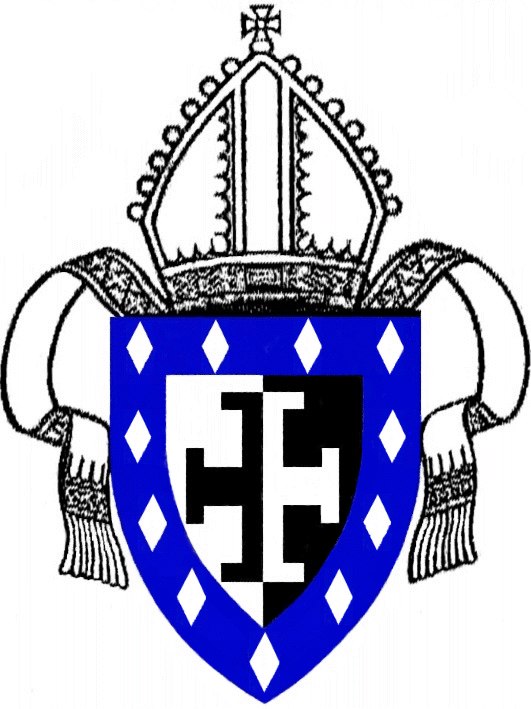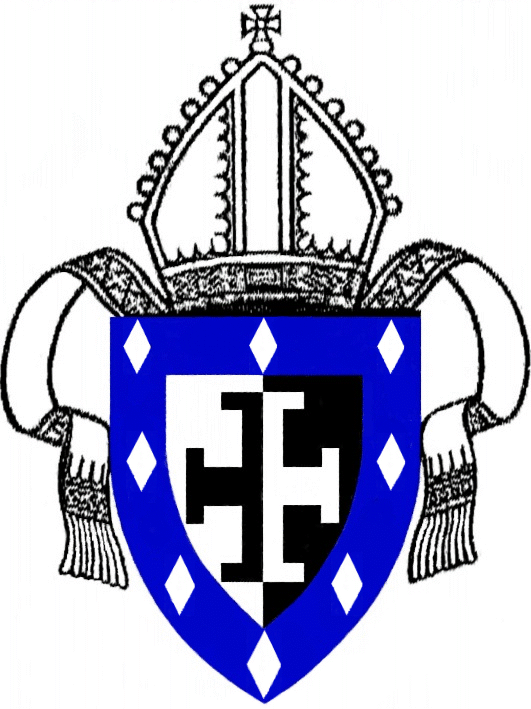
DIOCESE OF KIMBERLEY AND KURUMAN, Anglican Church of Southern Africa.[1]
Diocese established in 1911, a division of the Diocese of Cape Town.
Cathedral: St Cyprian the Martyr, Kimberley.

Arms first adopted in 1911, and granted by the College of Arms under Letters Patent dated 23 June 1953. The blazon reads:
Per pale, Argent and Sable, a cross potent counterchanged within a bordure Azure charged with eleven lozenges of the first.
Brownell[2] writes: “This version of the arms, with eleven silver lozenges in the bordure, was depicted in Crockford’s Clerical Directory from 1914 until 1930, after which the number of lozenges was reduced to eight, the usual number of heraldic charges borne on bordures in modern heraldry.
“The formal grant of these arms by the College of Arms in 1953, however, reverted to the original eleven lozenges.
“The heraldic term ‘potent’ refers to a crutch and these arms thus sugest the inter-relationship of the white and black members of the Diocese, each helping to bear the burden of the other, and both sanctified by the cross which is ‘potent’ to sustain them both.
“The diamonds in the blue bordure – an allusion to diamondiferous ‘blue ground’ – have reference to the main industry of the Cathedral City.”
About the diocese:
When the diocese was established in 1911, it covered the whole of the former colonies of Griqualand West (annexed to the Cape Colony in 1880) and British Bechuanaland (annexed to the Cape in 1895), as well as a large area to the south of the Orange River.
It has retained this surface area to the present time. The northernmost parts of the diocese became part of Bophuthatswana in 1977, and these districts, as well as the Vryburg district (from 1882 to ’85 the Republic of Stellaland) were joined to North West Province in 1994.

